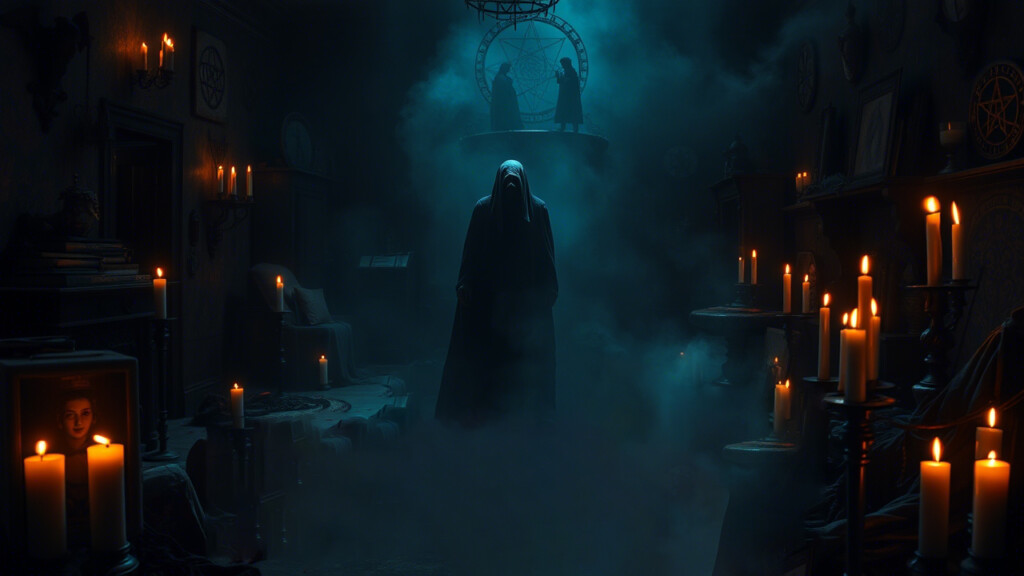Between the boundaries of reason and madness, what is the true nature of crime? Is it a twisted mind or an unseen force pulling the strings? Grisly murders and chilling confessions about “voices” urging the killers to act raise a haunting question: Are these crimes the product of a disordered psyche, or is an invisible hand orchestrating everything?

Throughout history, many cultures have believed that demons can possess humans, turning them into instruments of evil. Stories of “demonic possession” and “evil spirits inciting violence” are not just folklore; they have appeared in real criminal cases. Whether people believe it or not, some murderers claim they have no idea why they committed their crimes.
Murder Cases & Demonic Possession
Several cases have sparked controversy for decades:
- Ronald DeFeo Jr. (1974) – He murdered his entire family and claimed that “demonic voices” commanded him to do so.
- Arne Cheyenne Johnson (1981) – He insisted he was possessed when he killed his landlord. This case even inspired the movie The Conjuring: The Devil Made Me Do It.
These confessions lead many to believe that supernatural forces played a role. But can science explain these crimes?
Scientific Perspective: What Criminal Psychology Says
According to Dr. Phillip Resnick, a forensic psychiatry expert, the “demonic voices” that murderers claim to hear could be a symptom of schizophrenia—a mental disorder that causes a disconnect from reality. In a study published in the Journal of the American Academy of Psychiatry and the Law, Resnick pointed out that some schizophrenic patients genuinely believe they are being controlled by external forces, leading to violent behavior.
Ronald DeFeo Jr.’s case aligns closely with this phenomenon. A later medical report suggested he had a history of untreated mental illness.
As for Arne Cheyenne Johnson, some experts believe his psychological state may be linked to dissociative trance disorder, where individuals feel possessed by an external entity. Dr. Richard J. McNally, a psychology professor at Harvard University, notes that these symptoms can occur under extreme stress or strong religious influence.
It seems even demons fear a doctor’s prescription.
Science vs. The Supernatural: Who Holds the Truth?
If science dismisses possession as a symptom of mental illness, why do exorcisms still exist after centuries? Priests, chilling testimonies, and countless unresolved cases are still cited as “proof” of a world beyond science.
Some murder cases involving possession have even left scientists baffled!
- Clara Germana Cele (South Africa, early 20th century): A young girl suddenly spoke multiple languages, read people’s thoughts, and displayed superhuman strength. After an exorcism, she returned to normal. Was it a psychological disorder, or was an evil entity expelled?
- Roland Doe (USA, 1940s): This case inspired The Exorcist. The boy reportedly experienced eerie phenomena—objects moved on their own, he spoke in an unknown language, and emitted strange sounds. After several exorcisms, everything stopped.
According to Dr. Michael Persinger, a neuroscientist at Laurentian University, experiences like seeing demons or feeling possessed could result from abnormal activity in the temporal lobe of the brain. In his famous experiment, he created the God Helmet—a device that emitted weak magnetic fields into the brain. When wearing it, many people felt the presence of an unseen entity; some even claimed they were meeting “God” or “the Devil.” This suggests that supernatural experiences may be neurological illusions caused by electrical activity in the brain.
Yet, thousands of exorcisms are still performed worldwide, and science doesn’t always have the answers.
Who Is the Real Evil?
Whether it’s demons or mental illness, one thing remains true: crimes happen, leaving wounds that never fully heal. The real question isn’t choosing between science and the supernatural, but understanding that crime results from a complex interplay of psychological, biological, social, and even unexplained factors.
Dr. Adrian Raine, a criminology expert at the University of Pennsylvania, found that serial killers have distinct brain structures. MRI scans show that they often have underactive frontal lobes, the area responsible for impulse control and morality.
So, perhaps killers aren’t “possessed”—they may be victims of their own brains.
The truth is often scarier than we imagine. But the deeper we dive into the darkness, the closer we get to the light. And maybe, that’s the answer we should be seeking.
